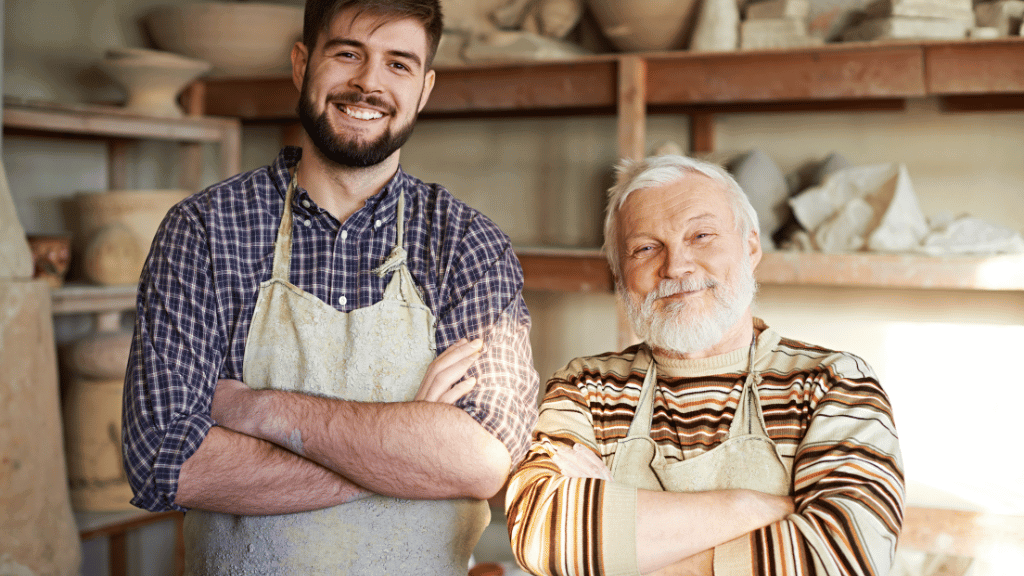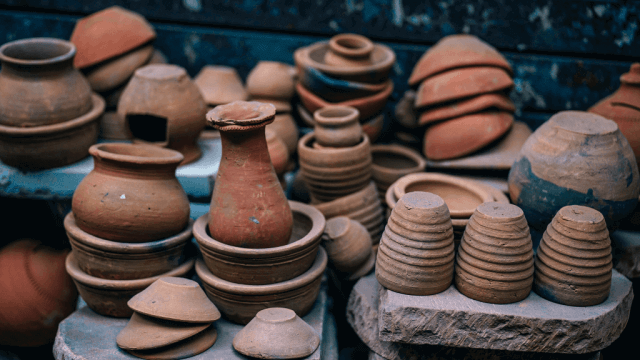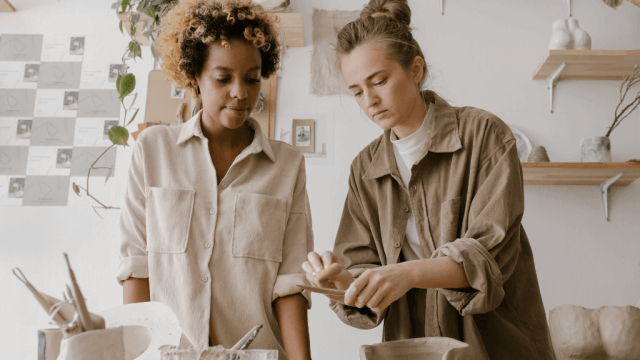Pottery equipment costs vary depending on the quality and type, but expect to spend around $150 to $400 for a basic wheel, $50 to $300 for a kiln, and $50 to $200 for tools and accessories.
These prices can change based on the brand and additional features you choose.
Essential Pottery Equipment Costs
Getting started with pottery requires investing in some essential equipment.
This blog post will break down the primary pottery costs for each necessary tool, helping you budget and plan for your new hobby or business.
Pottery Wheels
Pottery wheels are crucial for shaping clay into beautiful and functional art pieces.
The cost of a pottery wheel depends on the type, quality, and additional features you choose.
An entry-level wheel typically costs around $150, whereas a professional can go up to $400 or more.
Kilns
Firing your pottery pieces requires a kiln.
Kilns come in various types, including electric, gas, and wood-fired.
The price of an electric kiln, the most popular choice among potters, can range from $50 for a small tabletop model to over $300 for larger studio models.
Tools and Accessories
Assorted hand tools and accessories are essential to shape, smooth, and decorate your pottery pieces.
Basic tool kits can start as low as $10, while premium sets featuring more specialized tools can reach up to $100.
Additional accessories, such as glazes, slips, and specialty molds, can add another $50 to $200 to your pottery costs, depending on the selection and quantity.
Factors Affecting Pottery Equipment Cost
Quality and Brand
Higher-quality pottery equipment made from more durable materials often lasts longer and performs better than budget options.
Renowned brands may also charge a premium for their products due to their reputation within the industry.
New or Used
Buying used pottery equipment is a fantastic way to lower your expenses.
Many online and local art communities provide listings of used equipment for sale, which can be purchased for a fraction of the price of brand-new items.
Size and Features
Small, basic equipment tends to be less expensive than larger and more feature-rich models.
For example, a tabletop kiln will have a lower price tag than a stand-alone floor model with advanced temperature controls.
Now that you have a better understanding of pottery costs, you can make informed decisions when purchasing equipment for your new venture.
Remember to consider the quality, brand, and features that best match your needs, and don’t forget to explore the option of buying used equipment to save money.
Saving on Pottery Equipment Costs
Look for Discounts and Sales
Many pottery supply stores offer discounts or sales throughout the year, making it an excellent opportunity for potters to save on equipment costs.
Be on the lookout for these promotions, sign up for store newsletters, or follow social media accounts to stay informed about any upcoming deals.
Buy in Bulk
If you plan on pursuing pottery as more than a hobby, buying materials like clay and glazes in bulk can save you money in the long run.
Many suppliers offer discounted prices for larger quantities, which can significantly reduce your overall pottery costs.
Share Equipment and Studio Space
Another way to save on pottery equipment costs is to share equipment and studio space with fellow potters.
Joining a local pottery studio or co-op is an ideal way to gain access to shared resources, such as kilns and pottery wheels, while also benefiting from a community of like-minded individuals who can offer support and advice.
Considerations When Purchasing Pottery Equipment
Warranty and Maintenance
When investing in pottery equipment, consider any warranties or guarantees provided by the manufacturer.
This can save you money in case of equipment failure or defects.
Additionally, understanding the maintenance requirements of your equipment will help prolong its life, reducing your overall costs.
Energy Efficiency
Operating an electric kiln can contribute to higher energy bills.
Look for energy-efficient models that consume less electricity, helping you save money in the long run.
Features like digital temperature controls, quality insulation, and energy-efficient heating elements can help minimize energy consumption.
Safety and Ventilation
Pottery equipment, especially kilns, can generate high temperatures and release fumes.
Ensure that your workspace has proper ventilation to avoid any hazards and maintain a safe working environment.
Investing in a well-ventilated kiln or a ventilation system can help avoid health risks and prevent damage to your studio or home.
Taking these factors and cost-saving tips into account will allow you to make smart decisions when purchasing pottery equipment.
Investing wisely in quality equipment will help ensure the success and enjoyment of your pottery endeavors and minimize any unnecessary expenditures.
Frequently Asked Questions
In this FAQ section, we address some common questions that come up when considering the costs of pottery equipment and how to make informed decisions when planning your budget for pottery pursuits.
What should I consider when purchasing a used pottery wheel?
When buying a used pottery wheel, pay attention to the condition, brand, and reputation of the seller.
Test the wheel if possible, and inquire about any needed repairs or replacement parts to ensure it performs correctly.
What additional materials do I need besides the main pottery equipment?
Besides the main equipment, some necessary materials include clay, glazes, and underglazes, as well as plaster or disposable molds for slip casting, and a variety of storage solutions to hold your works-in-progress and completed projects.
Can I teach myself pottery or should I consider taking a class?
While it is possible to teach yourself pottery through the use of books, online tutorials, and practice, taking a class or joining a pottery studio will provide expert guidance, a supportive community, and access to equipment that may be cost-prohibitive to purchase individually.
How much does a pottery class typically cost?
The cost of a pottery class can vary greatly based on location, duration, instructor reputation, and materials provided.
On average, expect to pay anywhere between $50 to $500 for a pottery class or workshop series.
What is a cost-effective way to try pottery before investing in equipment?
Before making a significant investment in pottery equipment, consider enrolling in a beginner’s pottery class or joining a pottery studio with shared equipment and space.
This setup can provide you an opportunity to explore the craft before committing to costly purchases.











